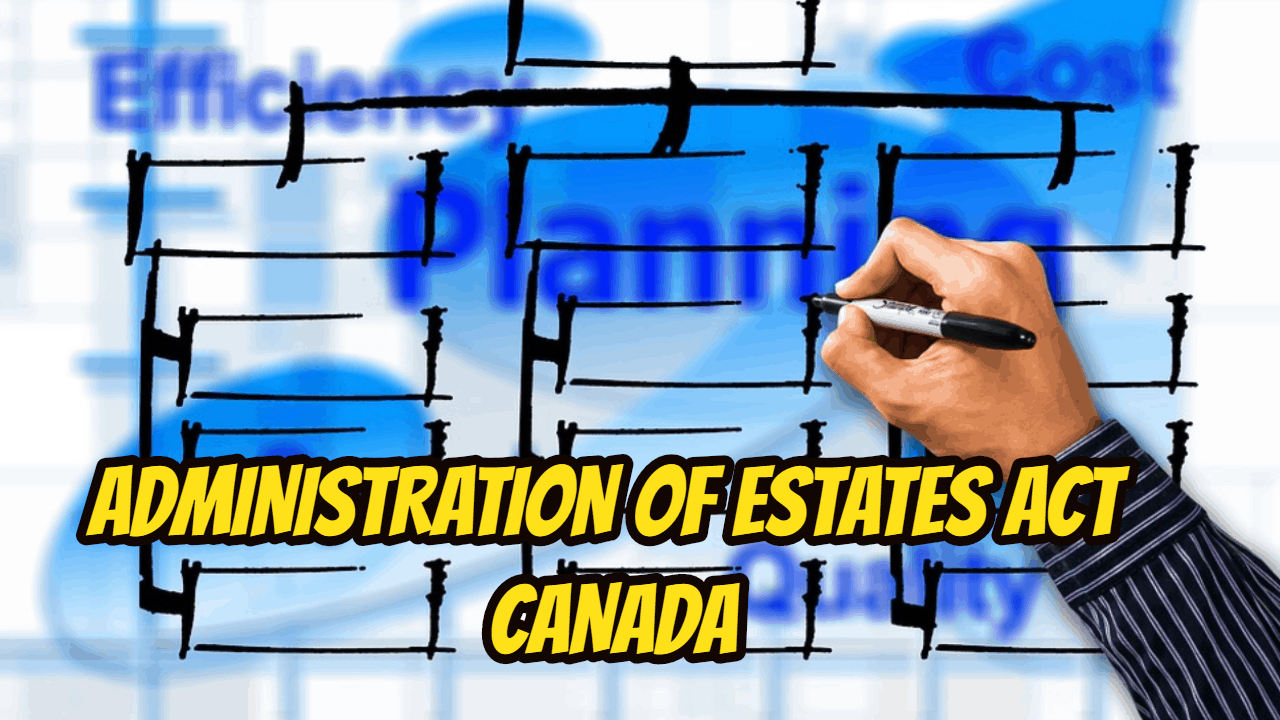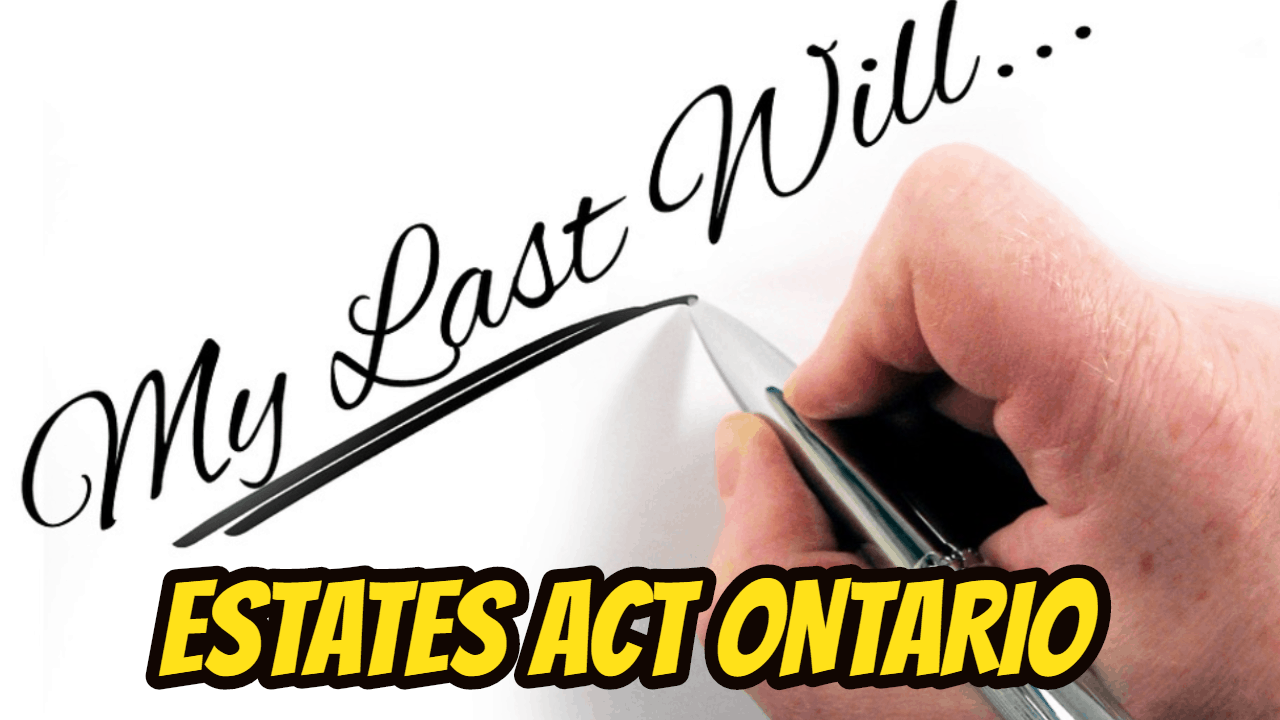If you would rather hear an audio version of this administration of estates act Canada, please scroll down to the bottom of this page and click on the podcast.
Administration of estates act Canada: Introduction
I want to discuss with you another provincial statute that is very important for the administration of estates act Canada; the Estates Administration Act, R.S.O. 1990, c. E.22. It continues my series of blogs to show how it would be very natural to appoint a licensed insolvency trustee (LIT or bankruptcy trustee) (formerly known as a bankruptcy trustee) as the estate trustee (formerly called an executor or executrix) of a solvent deceased estate.
In my blog TRUSTEE OF DECEASED ESTATE: WHAT A TORONTO BANKRUPTCY TRUSTEE KNOWS, I looked at some essential matters when it involves a deceased estate and why a LIT would be extremely knowledgable and competent to act as an estate trustee of a deceased estate with those basic requirements.
In the blog, TRUSTEE OF PARENTS ESTATE: DO I REALLY HAVE TO?, I explained why many times parents try doing the proper thing by appointing their children as estate trustees and how many times it just turns out all wrong.
In ESTATES ACT ONTARIO: TORONTO BANKRUPTCY TRUSTEE REVEALS HIDDEN SECRET, I describe how the requirements and provisions of the Estates Act are already very familiar to a bankruptcy trustee. In fact, most of the duties required by the Estates Act are already performed in the insolvency context by a LIT.
In this and the next two blogs, I want to focus on the three more Ontario statutes that deal with the duties and responsibilities of an estate trustee of a deceased estate. The three statutes are:
- Estates Administration Act, R.S.O. 1990, c. E.22;
- Trustee Act, R.S.O. 1990, c. T.23; and
- Succession Law Reform Act, R.S.O. 1990, c. S.26
As you have by now correctly guessed, in this blog, I will show how a bankruptcy trustee would be very familiar with the workings of the Estates Administration Act.
As always, since we are not lawyers, and I am by no means providing in this and upcoming Brandon’s Blogs advice on wills or estate planning matters. For that, you must consult your lawyer.
Administration of estates act Canada: Things an estate trustee must be aware of
Payment of debts out of the residuary estate
Section 5 of the Estates Administration Act states that both the personal property and the real property (subject to the rights of mortgagees) is available to pay the debts, funeral and testamentary expenses and the costs of the estate trustee in administering the deceased estate. The LIT is familiar with such a provision.
Section 136(1)(a) of the Bankruptcy and Insolvency Act (Canada) (BIA) prioritizes the reasonable funeral and testamentary expenses incurred by the deceased’s legal representatives. In a bankruptcy, those costs are paid as a preferred unsecured claim, behind trust and secured claims but before payment of ordinary unsecured claims.
Vesting of real estate not disposed of within 3 years
Section 9(1) of the Estates Administration Act states that real property not disposed of or conveyed within three years after the date of death is automatically vested in the persons beneficially entitled to such real property. The exception is if the personal representative or estate trustee has registered a caution on the title, then the three-year period starts from the date the last caution was registered.
The purpose and intent of the BIA is that all property of the bankrupt, not subject to a valid trust claim, security interest or is otherwise exempt, will automatically vest in the bankruptcy trustee. Section 40(1) of the BIA establishes the rules a trustee must follow to return to the debtor any property that could not be realized upon, despite the LIT’s best efforts.
Powers of executors and administrators about selling and conveying real estate
Sections 16 and 17 of the Estates Administration Act gives the power to sell real estate to a personal representative or estate trustee. It also says that additional powers are not just for paying off the debts of the deceased, but also for distributing or dividing the estate among the beneficiaries.
A LIT, either in a receivership or bankruptcy, is very familiar with and experienced in the sale of real and personal property. The LIT also ensures that the creditors are paid in the proper priority.
Protection of purchasers from personal representatives and beneficiaries
Sections 19 and 21(1) of the Estates Administration Act protects a purchaser of real property in good faith and for value from a personal representative or estate trustee. The purchaser can hold the asset free and clear from any debts or liabilities of the deceased, or any claims of the beneficiaries. The only exception would be those claims secured by a specific charge on title against the real property, such as a mortgage.
In an insolvency context, and especially in a Court-appointed receivership or bankruptcy, a purchaser would be wise to insist on the receiver or bankruptcy trustee obtaining the approval of the Court and vesting Order. The purpose would be to have Court orders approving the sale to the purchaser and vesting the assets in the purchaser.
In this way, the purchaser gains protection against any claims to the assets. The vesting Order vests out the asset(s), replacing it with the cash paid by the purchaser. Those with claims against the asset(s) now have to prove their claim against the cash. A LIT is very familiar and experienced in this aspect of selling assets.
Powers of personal representative about leasing and mortgaging
Section 22(1) of the Estates Administration Act gives the power to the personal representative or estate trustee to lease out real property to provide the deceased’s estate with income. It also allows for the mortgaging of real property to pay off the debts of the deceased.
Section 30(1) of the BIA gives various powers to a bankruptcy trustee. The leasing out of the real property and borrowing money, including giving mortgage security against real property, are two such powers. A Court-appointed receiver would get the same powers from the Order appointing the Receiver. A privately appointed receiver could also, with the permission of the secured creditor who made the private appointment, does the same thing. Therefore, a LIT is very familiar and experienced in exercising these powers and making the necessary business decisions.
Administration of estates act Canada: Summary
I hope that in this blog I have shown you that the provisions of the Estates Administration Act outlining the responsibilities of an estate trustee tracks very closely what a LIT does in either a Court-appointed receivership or bankruptcy administration.
Therefore, the LIT is used to acting as a Court officer and could very easily perform the requirements and duties of an estate trustee as described in the Estates Act Ontario.
If you have any questions about a deceased estate and the need for an estate trustee, whether it is solvent or insolvent, contact the Ira Smith Team. We have decades and generations of experience in helping people and companies overcome their financial problems. You don’t need to suffer; we can end your pain.
In my next blog, I am going to write a similar comparison. It will be about the requirements outlined in the Trustee Act and how a LIT is most familiar with them also.
In the meantime, if you have any questions at all, contact the Ira Smith Team.


